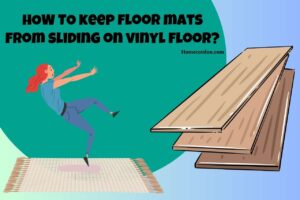Among the most flexible materials for home renovations and renovation tasks is caulk. The use of caulk, its composition, and its curing processes all differ substantially. So, What happens if caulk gets wet before it cures? If Caulk is exposed to water before it has had a chance to cure completely, the formulation will not work as planned. This may result in an extended than expected drying and curing time or, worse, a damaged good seal that you had hoped to achieve.
What is Caulk?
Among the most widely used methods for binding materials together now and keeping water off of any area is caulking. If you intend to construct fish tanks, close off a portion of the bathtub, or very undertake any bathroom repair, it’s a terrific item to have.
How to Use Different Types of Caulk Varieties?
There are many different kinds of caulk, and they can be categorized as acrylic, silicone, latex, or even a mix of such three types. These kinds serve many purposes. Caulk is frequently a concern when remodeling bathrooms since it is constantly in contact with moisture.
-
Butyl Rubber Caulk
However, despite its high level of specialization, butyl rubber caulk has poor general utility. The toughest and the most resilient caulk just on the market, though, is this one. Concrete plus bricks are its primary targets for sealing.
-
Latex-Acrylic Caulk
Windows, as well as doors, are utilized both inside and outside, and acrylic latex caulk, commonly known as painter’s caulk, is frequently used. Comparatively speaking, silicone caulk is far more challenging to apply.
-
Silicone Caulk
For locations with a lot of moisture, including restrooms and kitchens, silicone caulk is the best choice. Aside from having the highest mold tolerance of any caulk kind, silicone caulk’s best quality is its ability to stay flexible even after drying.
What Happens If Caulk Gets Wet Before It Cures?
Waterproofing takes time to develop. Caulk is employed in numerous environmentally friendly applications for a reason. It is dependable. Nonetheless, understanding what else to anticipate when water enters the caulk unexpectedly could significantly affect how well your job turns out.
So, what happens if caulk gets wet before it cures? If the caulk is exposed to moisture before drying, four possibilities exist.
- It Might Break
Even though it’s pretty improbable, this could break and shatter. The goal of using caulking initially in the instance would be entirely defeated.
-
It Could Fail to Adhere to the Ground
The likelihood of it failing to adhere to the areas you wish to adhere to is among the most probable scenarios. It’s possible that the caulking won’t be completely attached to the material until it has dried and cured. Causing gaps where water can soak through as a result. Additionally, the caulking could peel away from the surface.
-
The Treatment Will Be Protracted
It won’t be a massive problem if you have lots of time, but the drying and curing process will take significantly longer. Caulking might never completely dry out and dry if it absorbs moisture, mainly if it’s consistently moist.
-
Potential Mold as Well as Mildew Problems
Additionally, mold and mildew growth are potential consequences of caulking which takes too much time to cure correctly and harden. That this still caulking might actually be capable of supporting the growth of mold as well as mildew germs; later, this could cause a significant amount of dampness and mold to develop.
Why Doesn’t Caulk Dry?
Actually, there are a few reasons why caulk is not curing properly as you would want. Let’s see.
Moisture in the air has an impact on the drying time of caulk
Different types of caulk require different types of weather and environmental conditions to dry fast. For example, some caulk varieties need moisture to present in the air to dry fast, while some don’t. So, it is best to learn the type of caulk you use and the conditions it requires to dry fast.
Type of caulk you use
By now, you should know that there are different types of caulk serving different purposes. If you are currently experiencing that the caulk you applied is taking longer than you expected, perhaps you are using a caulking product that is not suitable for the purpose. However, this doesn’t necessarily suggest that it won’t dry. You need to have patience if this is the case. It will eventually dry up.
Using outdated caulk takes more time to dry
If you are using a caulking product that is already opened before, it can reduce the product’s shelf life considerably. Usually, caulk has a shelf life of around one year if it is not opened and gets reduced to two months once it is opened. This has a direct correlation with the time it takes to dry once applied. So, have a look at this factor as well.
The drawback of using expired caulk is that it takes a long time to dry up and will not provide you with the results you expect. More often than not, you will have to scrap and remove the caulk and go for a fresh application using a good product.
How to Make Caulk Dry Fast?
Well, there are a few things you can do to make caulk cure fast.
Proper application
Applying the silicone caulk correctly is the greatest approach to speed up the curing process. If you use it generously, it will take longer to dry and will take longer to cure.
Ensure to use a sharp blade to snip the tip cap prior to attaching it. The application tip should be as thin as possible. The small end will contribute to the creation of a slimline and speed up the curing process.
Be sure to utilize them once at a 45 ° angle while caulking the joint. After applying, wipe away any leftover caulk with a fresh cloth.
Running a blower
The curing process can be accelerated by running the blower. Using a humidifier close to the caulking might help it dry more rapidly.

How Can you Tell Whether the Caulk is Fully Cured?
Following application, caulk usually requires a few seconds to an hour to dry completely. Despite the fact that it seems dry to touch after quite a short while, it is not yet entirely cured nor watertight. The easiest approach to determine whether the caulk is dried or healed is to adhere to the curing times recommended by the company’s supplier.
It’s essential to keep in mind that caulks have a limited shelf life and that if you use them after that time, they might never heal. Add a little amount of the caulk to something like a nonporous area to test it out, and now after 24 hours, check to see if it has become flexible and leathery.
How can I use Caulk to Protect My Home from Moisture Damage?
– Apply caulk as well as you can in an area that is dry and well-ventilated. You don’t want to expose it to any additional wetness than you absolutely must. The outcomes are better when the atmosphere is dryer.
– Choose a moment when there won’t be any rain to spread the caulking if you are doing the outside. The perfect forecast is one that indicates there won’t be any rain over the following 24 hours. This guarantees that one won’t experience any significant accidents while it cures.
– Before opening the caulk tubing, sanitize the area that will receive the caulk application. Although it should be obvious, individuals frequently appear to overlook it. Washing the area thoroughly will help to keep mildew and bacteria from growing behind the caulk.
– When you believe moisture might enter the area while the caulk is drying, choose a quick-drying option. It will significantly increase the quality of your products even though the curing time is reduced by around an hour.
– Prior to beginning your project, read the instructions on the caulk bottle’s backside. The curing and drying durations vary somewhat according to the brand and kind. You need to be sure that the appropriate type is being applied in the proper manner.
“This video explains how you can make caulk dry fast. have a look at it as well.”
Discover More: Related Articles You Can’t-Miss
Tile Setting Time: How Long Does It Take for Tiles to Fully Set?
Oak vs Maple Flooring: Battle of the Hardwoods
Ways to Prevent Floor Mats from Sliding on Vinyl Flooring: Stay Put



